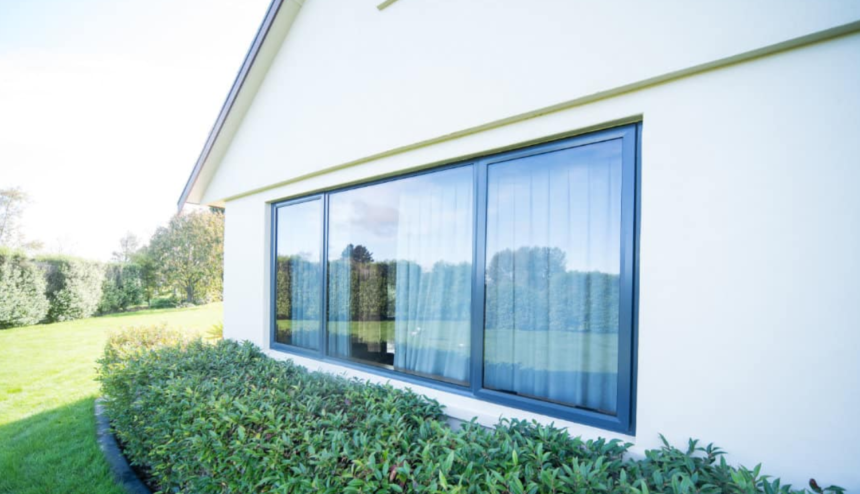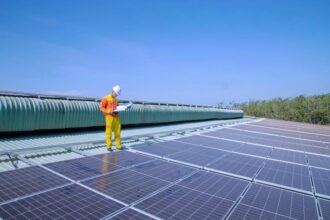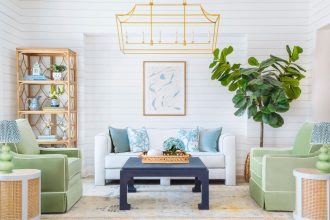Consider the benefits of glazing bars if you’re renovating or repurposing outside space with roofed additions such as pergolas, carports, conservatories or gazebos. These architectural elements have a rich history and come in designs and materials that elevate the style and practicality of your home, regardless of what you’re building.
What Are Glazing Bars?
Glazing bars at their core are rigid bars connecting two separate glass or polycarbonate panes. They date back to Georgian times and are found in sash and other window styles, where multiple smaller and more affordable pieces of glass were used to create larger windows. They’re extensively used in Georgian and Victorian homes (after the window tax was repealed in 1851) and have become their defining feature.
While the cost of glass has significantly fallen (and smaller pieces are now more expensive), glazing bars are still seen in windows of classic homes, and as an aesthetic feature in newer builds. Meanwhile, designs and materials have expanded to include PVC and aluminium glazing bars, as well as rafter and self-supporting types, usually seen in carports, lean-to roofs, shelters and pergolas.
Their main purpose is to support the glass or polycarbonate in these structures, meaning they need to be durable enough to last in varied weather, strong enough to hold heavier loads, and also be waterproof. These defining factors mean structures and glazing bars that last for years.
Rafter vs. Self-Supporting Bars
If your home addition already has a timber structure, then rafter glazing bars are used to support the weight of the glass or polycarbonate roof. However, if you need to connect multiple panes, then consider self-supporting types. The two types essentially differ in how the glazing is supported.
Rafter bars are used on timber framework or rafters. They screw down into the rafters along their length, with the rafters providing the necessary structural strength. Rafter bars have no inherent strength of their own, but are used to secure the glazing material to the rafter and provide waterproofing. This is achieved with snap-down PVC or aluminium caps.
Self-supporting glazing bars are considered structural elements in that they don’t require separate timber frames but are fixed at the top and bottom of the bar. The design feature means self-supporting bars are structurally stronger, but also more costly. When installing them, consider the rated weight loading for your material, and how the weight is distributed. to ensure that breams adequately support the glazed roof, and prevent any play.
Plastic or Aluminium Rafter Bars
To meet varying customer requirements, glazing bars are sold in PVC or aluminium. Choose PVC types for their low weight, lower prices, and high durability. The material is inherently weather and water-proof, can last for years in varied conditions, and is easier to install. PVC bars are suitable for multiwall polycarbonate in most thicknesses, with adequate support.
For heavier and larger glass or thicker polycarbonate roofs, choose the added strength of aluminium rafters. Aluminium bars are tough, rust-resistant and retain their looks in varied weather, but they do a better job with heavier loads. Both types of bars are used with fully-kitted installation sets that additionally include rubber seals to wick away moisture and simple PVC or aluminium screw-down or snap-on caps and end plates to ensure a tight seal.
This also extends the longevity of the polycarbonate or glass by limiting water ingress, condensation, and debris buildup. Capped systems additionally help to keep profiles neater, with more pleasing looks.
Choosing Colours and Designs
There’s a wide selection of colours when choosing plastic or aluminium glazing bars. Brighter colours work better for interior uses, while black, brown and grey do a good job for outdoor applications. Aluminium glazing rafters can also be sourced in metallic grey and silver shades to highlight looks.
Manufacturers in the UK can state colours in the international RAL or British Standard systems for easier colour matching. More popular options are matte white (RAL 9010), and (RAL 8040) dark bronze for capped systems used in home additions ranging from carports and canopies to pergolas and larger conservatories. Also, look into bars with milled finishes if you’re considering powder coating them and adding a layer of paint that best suits your needs.
Besides colours, choose the style of the end caps. Plain caps reduce overall costs in larger projects, but if you want more distinct looks go with ornate or cosmetic caps that draw more attention. Both are used to hide internal fixing screws and to ensure structural integrity with limited weathering or maintenance needs.
Other Buying Considerations
When choosing between PVC and aluminium glazing bars and rafters, consider the specifics and scale of your project. Compared to self-supporting aluminium types seen in roof lanterns, conservatories and orangeries, rafter systems offer more flexibility. Choose screw-down aluminium glazing bars for builds like pergola roofs and skylights. These are cost-effective, can handle polycarbonate up to 25mm thick, and include rafters up to 60mm wide. Also, use these if you’re swapping polycarbonate for glass.
PVC snap-on systems benefit from lower cost, simpler installation and integral gaskets for improved waterproofing. These are found in covered walkways, canopies and other builds, with polycarbonate sheeting in lower thicknesses (2.5 to 8mm). Both materials are supplied pre-packed in 3 and 4-metre lengths. To choose right, consider your roof type, whether you’re going with thinner and lightweight polycarbonate or need the look (and weight) of glass and how the PVC or aluminium bars compare in terms of longevity and looks. And don’t forget installation times and overall cost.
Summing Up
Glazing bars have evolved from older sash windows to support glazed materials in different outdoor and indoor projects. Rafter systems are ideal for common backyard and driveway additions, or bigger structures on larger acreage. Choose between plastic and aluminium rafter bars for carports or pergolas, with considerations in terms of overall size, polycarbonate or glass thickness, fitting hardware and specifics like looks and colours.















